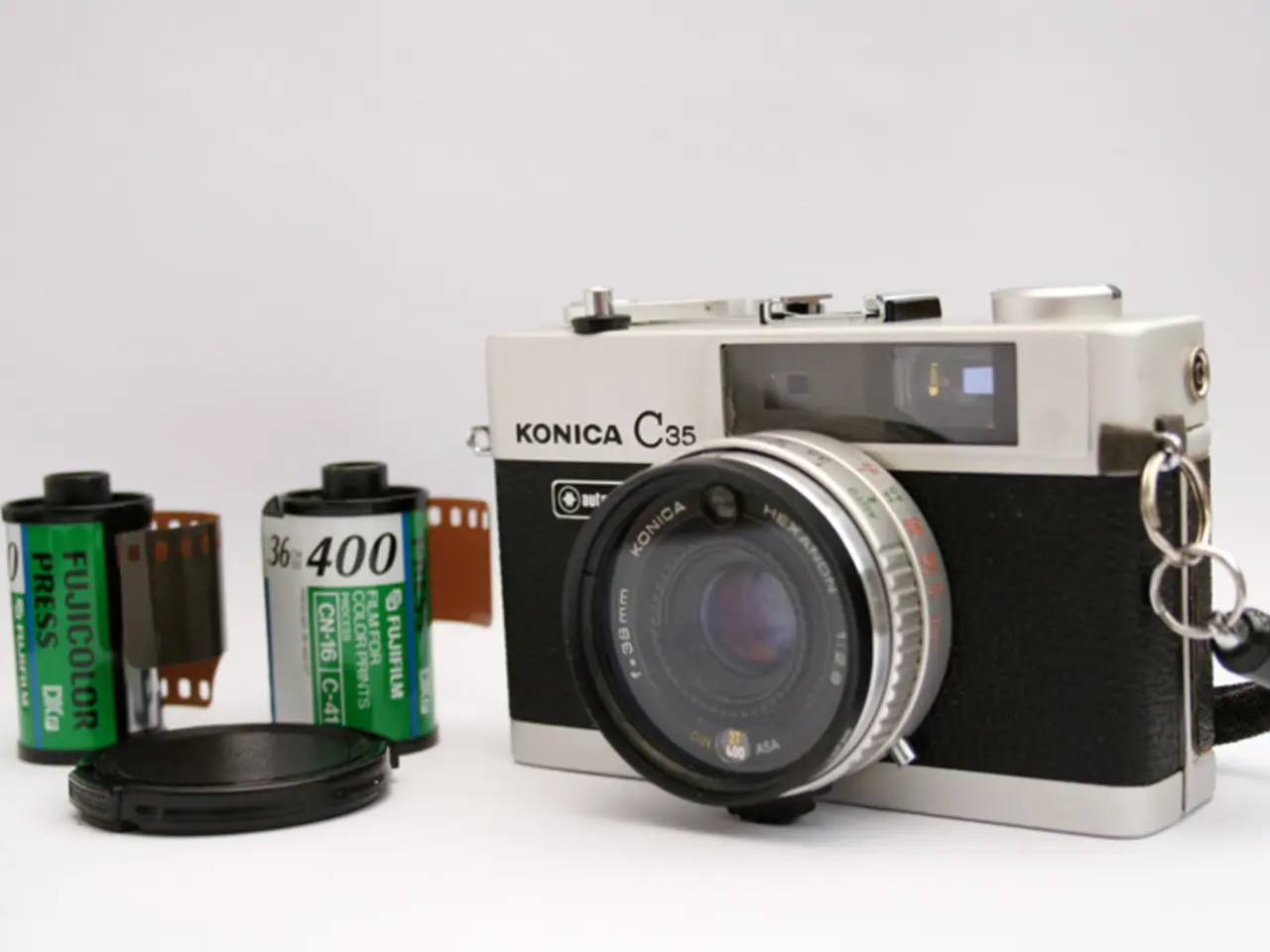Underwater photography enthusiasts will appreciate the reasons why the Nikon Z7 is now preferred over other cameras.
Newly Released Nikon Z7 Impresses in Underwater Photography Tests
The Nikon Z7, a groundbreaking full-frame mirrorless camera, has made a splash in the world of photography. Recently, a Nikon Z7 camera equipped with an Ikelite housing was put to the test for underwater photography.
In the depths of the ocean, the Z7 was paired with a Nikkor 8-15mm circular fisheye lens for wide-angle shots and a Nikkor 105mm f/2.8 macro lens for close-up photography. The Ikelite housing, designed for the Z6 and Z7, proved to be a capable piece of equipment, albeit still large and heavy.
Despite its size, the Z7 performed admirably. The autofocus, particularly in low-light conditions, was found to be efficient and accurate. However, the continuous mode did not meet expectations, especially for fast-moving subjects.
The Ikelite housing's standout feature was the ability to use the electronic viewfinder, allowing for a whole dive with the eye on the viewfinder. The housing also accommodated the use of the DL1 DS Link TTL converter, which was found to be efficient and accurate.
However, the flash sync speed of the Z7, at 1/200th, can make capturing good sun ball shots challenging. Furthermore, the battery life of the Z7 requires a spare battery for extended use.
The Z7's dynamic range is slightly less compared to the D850, causing slight banding in very low light situations. There is also a minor complaint regarding noise level, especially at low ISOs without using the NR function.
Despite these minor drawbacks, the Nikon Z7 offers an intuitive design and a quick learning curve for those migrating from other Nikon systems. The camera features a single XQD card slot, which is expensive but faster at processing photos. Additionally, the Z7 boasts built-in 5-axis image stabilization, a significant advantage over the D850.
The Nikon Z Series, with its potential for innovation in photography, is worth the investment. The Z7, in particular, is smaller and lighter than the D850, making it more suitable for travel and diving.
For underwater photographers, the Z7's lens selection is currently limited, but the growing lineup of native Z lenses and compatibility for existing Nikon F-mount lenses via the FTZ adapter offer promising possibilities. The flexibility to use a variety of lenses, including the Tamron 24-70mm f/2.8, Nikon AF-S Micro 105mm f/2.8, and Nikon Z 24-70mm f/2.8 S, is a significant advantage.
In conclusion, the Nikon Z7, when paired with suitable underwater housings, offers exceptional image quality, autofocus sophistication, and lens adaptability, making it a strong choice for underwater photography. However, it is more expensive and less proven in extreme conditions than DSLRs like the D850, and some newer mirrorless models may offer faster autofocus performance. Lens choices for underwater use are good and growing but rely on housing compatibility and adapters for some lenses.
- The Nikon Z7, a groundbreaking full-frame mirrorless camera, was impressively tested for underwater photography, using an Ikelite housing and Nikkor lenses for wide-angle and macro shots.
- In pairs with a Nikkor 8-15mm circular fisheye lens and a Nikkor 105mm f/2.8 macro lens, the Z7 displayed efficient and accurate autofocus, even in low-light conditions.
- The Ikelite housing, designed for the Z6 and Z7, allowed the use of the electronic viewfinder, enabling a whole dive with the eye on the viewfinder.
- Despite producing good results, the flash sync speed of the Z7 can make capturing sun ball shots challenging due to its 1/200th limit.
- The compact Z7, featuring a single XQD card slot and quick image stabilization, is more suitable for travel and diving compared to the D850.
- For underwater photographers, the Z7 offers lens adaptability, including compatibility for existing Nikon F-mount lenses, and promising possibilities with future native Z lenses.
- Despite minor concerns regarding dynamic range, noise level, and battery life, the Nikon Z7's potential for innovation,), small size, and lens compatibility make it a worthwhile investment for underwater photography enthusiasts.




